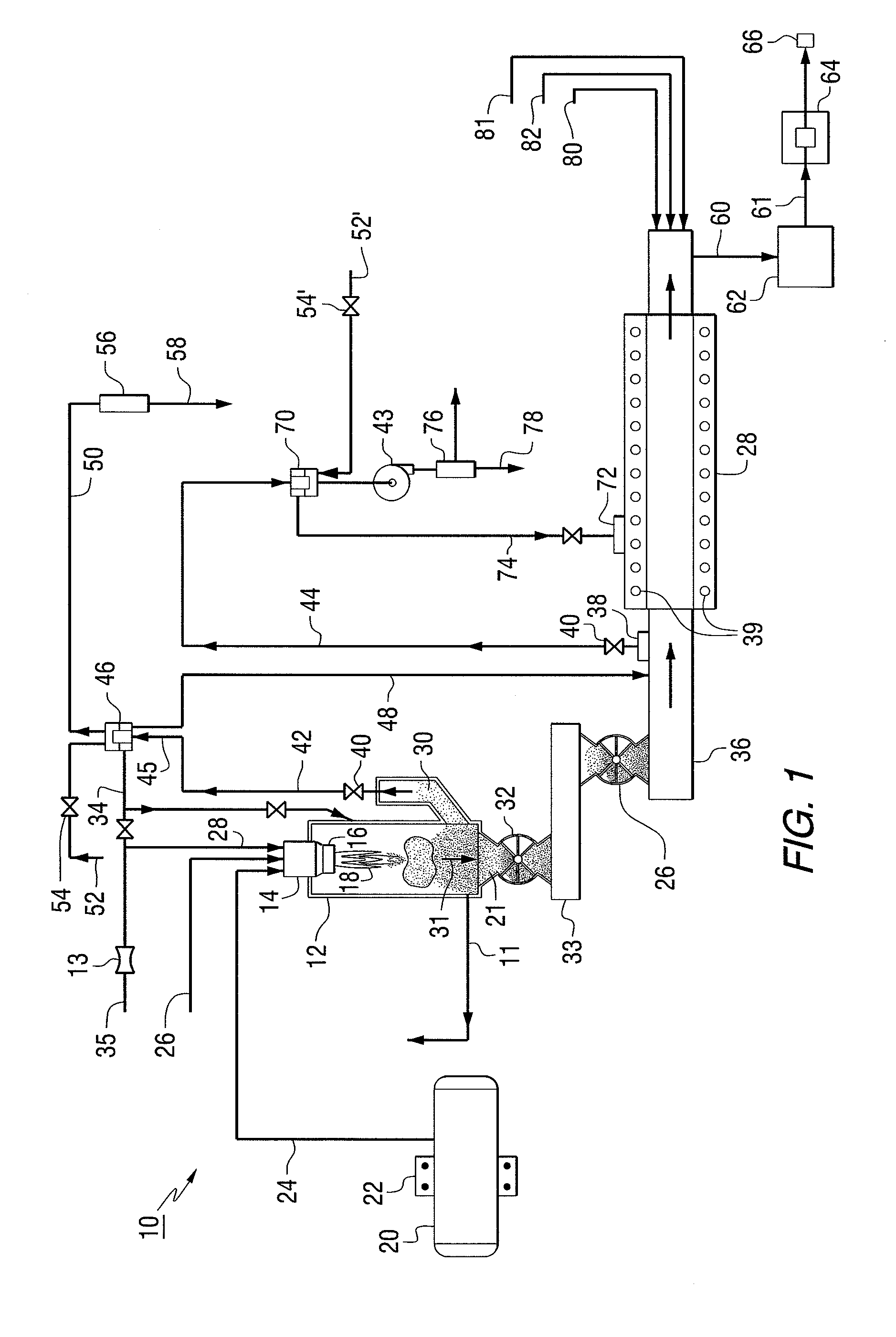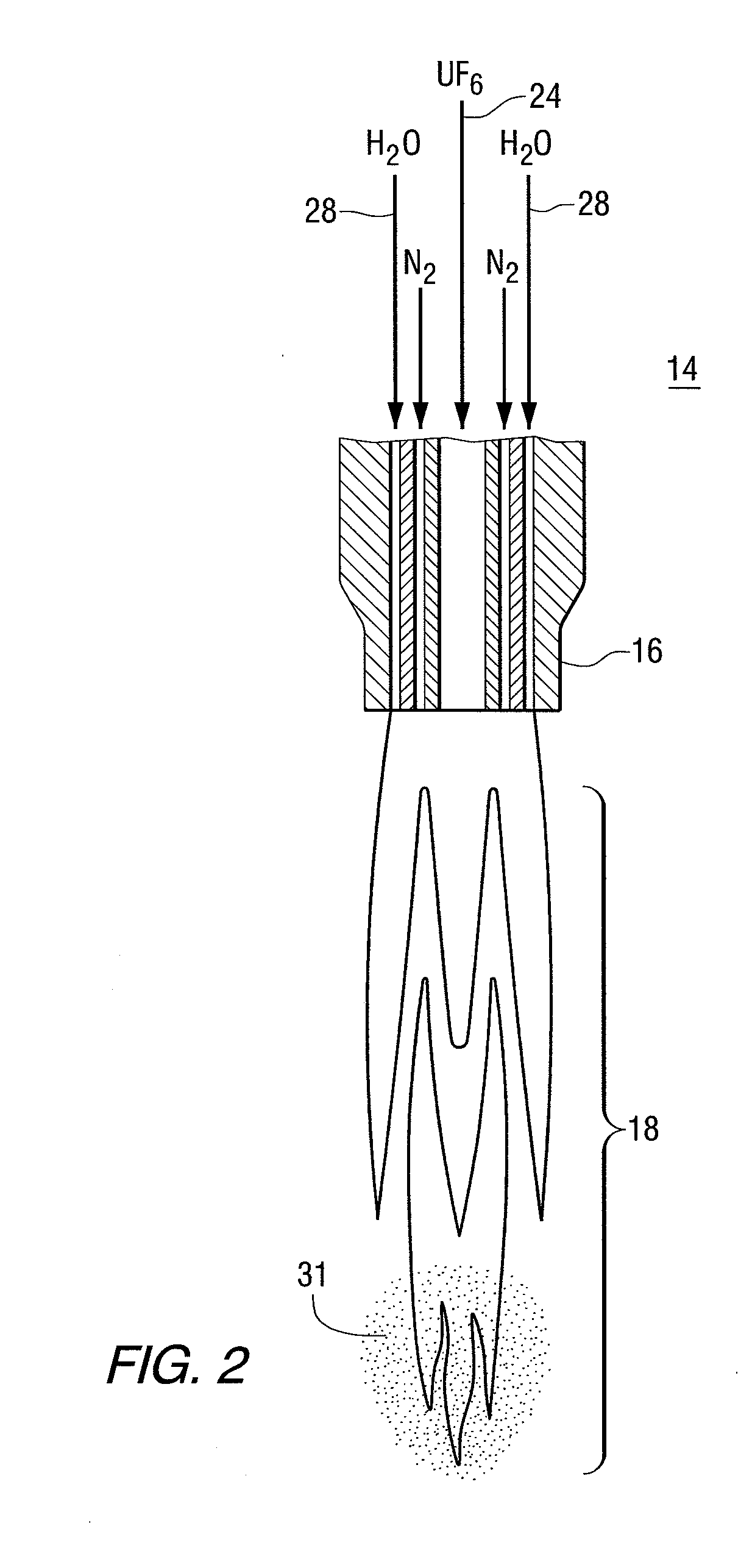Two step dry uo2 production process utilizing a positive sealing valve means between steps
a technology of positive sealing valve and uo2 powder, which is applied in the direction of uranium compounds, nuclear elements, greenhouse gas reduction, etc., can solve the problems of difficult operation, large amount of liquid waste, and inefficient or economical current procedures for converting ufsub>6/sub>to uosub>2, and achieve tight temperature control of each process step.
- Summary
- Abstract
- Description
- Claims
- Application Information
AI Technical Summary
Benefits of technology
Problems solved by technology
Method used
Image
Examples
example
[0061]In the first reaction, the steam / UF6 ratio of 0.2 by weight with the temperature in the flame reactor of 400° C.
[0062]In the rotary kiln reaction, the steam / H2 ration=20 by weight, with the temperature held at a maximum 600° C. The steam / UO2 ratio is about 0.8 by weight
[0063]The UO2 powder surface area is equal to approximately 4 meters2 / gm. The final density of pressed and sintered pellets was approximately 98.5%.
[0064]A positive valve seal—star valve is used between the first reaction and the rotary kiln.
PUM
| Property | Measurement | Unit |
|---|---|---|
| temperature | aaaaa | aaaaa |
| temperature | aaaaa | aaaaa |
| temperature | aaaaa | aaaaa |
Abstract
Description
Claims
Application Information
 Login to View More
Login to View More - R&D
- Intellectual Property
- Life Sciences
- Materials
- Tech Scout
- Unparalleled Data Quality
- Higher Quality Content
- 60% Fewer Hallucinations
Browse by: Latest US Patents, China's latest patents, Technical Efficacy Thesaurus, Application Domain, Technology Topic, Popular Technical Reports.
© 2025 PatSnap. All rights reserved.Legal|Privacy policy|Modern Slavery Act Transparency Statement|Sitemap|About US| Contact US: help@patsnap.com



